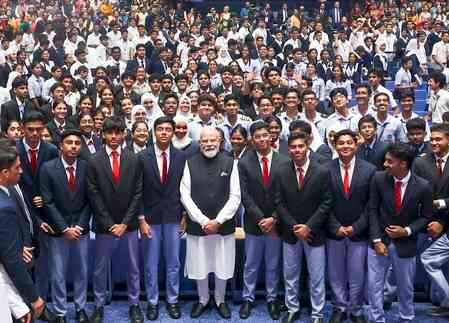Impact of US Reciprocal Tariffs on Indian Gem & Jewellery Exports
Statement by Kirit Bhansali, Chairman, GJEPC

Bengaluru, August 11, 2025: The US Government’s announcement of a sweeping 50% tariff on all Indian goods is a deeply concerning development with far-reaching repercussions for India’s economy. This move threatens to disrupt critical supply chains, stall exports, and jeopardise thousands of livelihoods.
The Indian gem and jewellery sector will be among the hardest hit. The US is our single largest export destination, accounting for over $10 billion in exports—nearly 30% of our total global trade. SEEPZ SEZ alone directs 85% of its exports to the US, providing employment to 50,000 workers. For cut and polished diamonds, half of India’s exports are US-bound. With such heavy reliance on this market, the proposed tariff could push the industry towards a standstill, affecting every layer of the value chain—from small karigars to large manufacturers.
Compounding the challenge, competing hubs such as Turkey (15%), Vietnam (20%), and Thailand (19%) continue to enjoy far lower US tariffs, making Indian products less competitive. This imbalance risks eroding India’s long-standing position as a key supplier to the US and may encourage trade rerouting via low-tariff destinations like Mexico, Canada, Turkey, UAE, or Oman, undermining legitimate trade and transparency.
Despite these headwinds, the industry remains resilient. The recent IIJS Premiere 2025 showcased robust domestic demand, with projected business between ₹70,000 crore and ₹1 lakh crore. The domestic gem and jewellery market—currently worth $85 billion—is expected to reach $130 billion within two years, offering some cushion, especially for the diamond sector.
At the same time, GJEPC is aggressively pursuing market diversification. The upcoming Saudi Arabia Jewellery Exhibition (SAJEX) in September 2025, and the proposed India Jewellery Exposition Centre in Saudi Arabia, aim to tap emerging regions and reduce over-dependence on the US.
However, urgent government intervention is vital. We respectfully appeal for relief measures to safeguard the sector’s survival and competitiveness:
Relief Sought from the Government of India
Duty Drawback/Reimbursement Scheme: A targeted scheme covering 25–50% of the new US tariffs (Aug–Dec 2025) to offset financial strain, prevent order cancellations, and maintain market share.
Market Diversification Support: Financial assistance under the MAI Scheme for new market development, including support for SAJEX and the proposed Saudi IJEX model.
Deferment of Interest on Working Capital: A six-month interest deferment (Aug 2025–Jan 2026), similar to COVID-19 relief measures.
Reverse Job Work for SEZ Units: Permit SEZ units to undertake reverse job work for the Domestic Tariff Area (DTA), with duty applicable only on duty-free inputs used.
Permission for DTA Sales: Allow SEZ units to sell existing stock/pipeline to the domestic market under duty foregone terms to prevent NPAs and safeguard employment for 1.25 lakh artisans.
Pre-Shipment Finance Relief: Extend loan due dates by at least 90 days without penalties to accommodate shipment delays.
Interest Equalisation Scheme: Reintroduce the scheme to enhance export competitiveness, particularly for MSMEs.
Liquidity Packages: Introduce short-term relief loans similar to concessional COVID-era packages.
Credit Rating Stability: Ensure rating agencies do not downgrade sector ratings solely due to tariff-induced slowdown.
As a responsible industry, we remain aligned with and supportive of the Government of India’s efforts. In these challenging times, we reaffirm our commitment to protecting the integrity of our trade, sustaining employment, and upholding the nation’s economic interests with unity and resolve.


 City Air News
City Air News 











